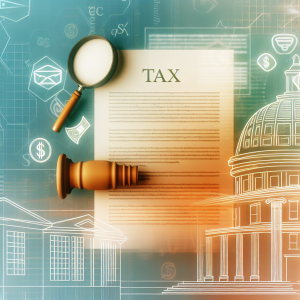The recent overhaul in tax policy targeting higher education endowments signals a seismic shift for America’s elite universities—and savvy investors should take note. The new legislation, signed into law by President Trump, replaces the flat 1.4% tax on endowment income with a tiered system that can reach as high as 8% for the wealthiest institutions. This change is not just a tweak; it’s a fundamental recalibration of how top-tier universities manage their finances, with ripple effects that will extend far beyond campus gates.
The New Endowment Tax: A Closer Look
Under the revamped tax structure, universities with endowments above certain thresholds face significantly higher tax rates, while smaller schools with fewer than 3,000 tuition-paying students are exempt. This carve-out effectively shifts the tax burden onto research-heavy, well-endowed institutions like Yale, Harvard, and Stanford—the very universities that have traditionally been financial powerhouses.
For example, Yale alone anticipates paying $280 million in the first year under this new tax regime. That’s a staggering hit to their bottom line, forcing immediate cost-cutting measures such as hiring freezes, salary reductions, and postponed capital projects. These are not isolated responses; they mark the beginning of a broader financial tightening cycle that will likely affect many of the nation’s top research universities.
Implications for Investors and the Education Sector
Why should investors care? Universities with massive endowments are significant players in the financial markets. They manage multi-billion-dollar portfolios that influence asset prices, fund groundbreaking research, and support innovation ecosystems. A sudden tax increase reducing their net returns could lead to more conservative investment strategies, less liquidity, and potentially slower growth in sectors reliant on university-backed research and startups.
Moreover, the tax hike may compel universities to raise tuition and cut financial aid—a double whammy for accessibility and enrollment. According to J.P. Morgan Asset Management, college tuition has already been rising at an average annual rate of 5.6% since 1983, outpacing most household expenses. Experts like Phillip Levine of Brookings Institution suggest this trend will accelerate as schools brace for revenue shortfalls.
What This Means for Advisors and Investors
-
Reevaluate Exposure to Education-Linked Assets: Endowment funds contribute significantly to venture capital, biotech, and tech sectors. Investors should scrutinize their portfolios for indirect exposure to universities and consider potential volatility or shifts in funding patterns.
-
Monitor Tuition-Dependent Revenue Streams: Companies and funds tied to student services, housing, and educational technology may face headwinds if tuition hikes slow enrollment growth or reduce discretionary spending among students.
-
Look for Opportunities in Alternative Education Models: Rising costs and financial aid cuts could fuel demand for more affordable, innovative education platforms—think online learning, coding bootcamps, and vocational training. Investors might find growth potential here as traditional models face disruption.
-
Watch Policy Developments: This tax change is part of a broader trend of increased scrutiny on wealthy institutions and federal funding cuts. Staying ahead requires vigilance on legislative updates and their impact on financial aid, Pell Grants, and international student policies.
A Unique Insight: The Research University Tax Effect
Rick Grafmeyer of Capitol Tax Partners aptly calls this the “research university tax” because it disproportionately affects institutions with large research budgets and endowments. This could slow the pace of scientific breakthroughs and innovation commercialization that have historically fueled economic growth. Investors should consider the long-term macroeconomic impact of diminished university research funding, especially in high-tech and pharmaceutical sectors.
What’s Next?
Expect universities to continue lobbying for relief and exemptions, but also brace for a period of financial austerity. For investors, this means adapting strategies to a higher-education landscape that’s less predictable and more financially constrained. Diversification into emerging education technologies and alternative funding mechanisms could be a prudent hedge.
In conclusion, the higher endowment tax is more than a fiscal policy change—it’s a bellwether for the evolving relationship between education, innovation, and investment. Extreme Investor Network will keep you ahead of these shifts with expert analysis and actionable insights as this story unfolds.
Sources:
- J.P. Morgan Asset Management, Trends in College Tuition Inflation
- Brookings Institution, Phillip Levine, Economic Impacts of Tuition Increases
- Capitol Tax Partners, Rick Grafmeyer, Analysis of Endowment Tax Changes
- Yale University Official Statements on Endowment Tax
Stay tuned for more exclusive updates and strategic guidance on navigating the complex intersection of education policy and investment opportunities.
Source: How an endowment tax in Trump’s big beautiful bill may impact colleges

